The decade of the 1970s was the Golden Age of popular fiction in America. If you doubt me, you have only to take a look at a list of the bestselling books of the era. It includes a far more diverse group of writers and settings than you would find on the bestseller lists of the last forty years. Since about 1980, the bestselling fiction in America has been written by fewer and fewer writers, has included fewer non-American authors, and has featured fewer tales set in real countries outside of America.
Only once, during the thirty years that comprise the 1950s, 60s, and 70s, did one author manage to land two titles in one year on Publishers Weekly’s annual list of the ten bestselling novels. It happened in 1972 when Frederick Forsyth’s The Odessa File and The Day of Jackal were the third and fourth bestselling novels of the year, respectively. During the 1970s, the year-end lists of bestselling novels featured a wide array of writers, and the names could change entirely from one year to the next. For instance, none of the ten bestselling novelists of 1970 (Erich Segal, John Fowles, Ernest Hemingway, Mary Stewart, Taylor Caldwell, Leon Uris, Jimmy Breslin, Victoria Holt, Graham Greene, and Irwin Shaw) appeared on the 1971 list (Arthur Hailey, William Peter Blatty, Irving Stone, Frederick Forsyth, Harold Robbins, Helen MacInnes, Herman Wouk, James Michener, Thomas Tryon, and John Updike). Likewise none of those 1970 top-ten novelists appeared on the year-end list of bestsellers in 1975, and only one of them (Mary Stewart) appeared on the decade’s final list, in 1979.
Compare that with the list for the year 2000. The bestselling novel of 2000 was John Grisham’s The Brethren. The year 2000 was the seventh consecutive year in which the top spot was held by a Grisham novel. The second and fourth bestselling novels were both written by the writing team of Jerry B. Jenkins and Tim LaHaye. The third bestselling book of 2000 was Tom Clancy’s The Bear and the Dragon. It marked his tenth appearance on a year-end bestselling-novels list, going all the way back to the mid-1980s. Danielle Steele held both the sixth spot and the tenth spot on the list. James Patterson held the eighth and the ninth spot. The list for 2000 was fairly typical of the era except for the lack of a Stephen King title. In the 1980s King missed the year-end list of bestselling novels only once. The same thing happened in the 1990s. But he made up for those omissions by frequently landing more than one title on the year-end list. In 1983 both Pet Cemetery and Christine made the list. In 1987 The Tommyknockers, Misery, and The Eyes of the Dragon all made the list. In 1990 he landed two more books on the list. In 1992 he had the year’s number-one bestseller, Dolores Claiborne, and the year’s number-three bestseller, Gerald’s Game. The second bestselling book that year was John Grisham’s The Pelican Brief.
And then of course there is the phenomenon of Danielle Steele. She wrote two of the year’s top-ten bestsellers in 1985, 1987, 1989, 1991, 1992, 1995, and 1996. She landed three books on the top-ten lists of 1994, 1997, and 1998. I haven’t even mentioned the numerous years in which she made the list only once. In 1997 books by Steele and Patricia Cornwell accounted for half the titles on the year-end list. In 1992 Steele and King accounted for forty-percent of the list. Throw in a few titles by Michael Crichton, Mary Higgins Clark, and Anne Rice, and you’ve got a good description of just about every year-end bestseller list of the 1990s. And the list has only gotten less diverse since then. Consider, for instance, the year 2012, when books by Suzanne Collins (The Hunger Games series) and E.L. James (The Fifty Shades series) held seven of the list’s ten spots.
The bestseller list of 1970 contained four British authors (Greene, Fowles, Stewart, and Holt) as well as an American (Caldwell) who was born in England and emigrated to America as a child. One of the ten novels (The French Lieutenant’s Woman) is set in the Lyme Regis area of England during the 19th Century. Another (Hemingway’s Islands In The Stream) takes place in the Caribbean. Victoria Holt’s The Secret Woman begins in England and then moves to the South Pacific. Mary Stewart’s The Crystal Cave is an Arthurian fantasy. Caldwell’s Great Lion of God is about Saul of Tarsus. Leon Uris’ QB VII is a courtroom drama set mainly in England but which also concerns the Holocaust. Graham Greene’s Travels With My Aunt is about an Englishman who travels across Europe on the Orient Express and later winds up in South America. Thus seven of the year’s ten bestselling novels had absolutely nothing to do with the United States of America. Compare that with a typical year-end bestseller list of our day. The stories nowadays usually take place in a contemporary American setting or an entirely fantastic one (i.e.: Stephen King’s Dark Tower universe, which was inspired in part by America’s Old West, and Suzanne Collins’ Hunger Games universe, which is a bleak dystopian vision of a future America). Even when a contemporary bestseller is set largely overseas, such as is the case with Dan Brown’s The Da Vinci Code and its sequels, the story is told through the eyes of an American character and is clearly directed at an American audience.
Here is the bestseller list for 2006:
For One More Day by Mitch Albom
Cross by James Patterson
Dear John by Nicholas Sparks
Next by Michael Crichton
Hannibal Rising by Thomas Harris
Linsey’s Story by Stephen King
Twelve Sharp by Janet Evanovich
Cell by Stephen King
Beach Road by James Patterson and Peter de Jonge
The Fifth Horseman by James Patterson and Maxine Paetro
The authors are all Americans, mostly born during or near the Baby Boom, and the stories with one exception are set in America (Thomas Harris’s novel is about the early years of fictional American serial killer Hannibal Lecter, and takes place mostly in Europe). During the first decade of this century, the only foreign author to make it onto a year-end list was J.K. Rowling.
Why has popular fiction become so much less diverse than it used to be? Various factors can help explain the trend – the rise of chain bookstores, the rise of Amazon.com, conglomeration in the publishing industry, the influence of Hollywood – but one factor that hasn’t gotten a lot of attention is the influence of Baby Boomers, particularly Baby Boomer authors, on American reading habits. The most popular authors of the Baby Boom generation (born between 1946 and 1964) are far more prolific than the bestselling authors of earlier eras. Sure, previous generations produced plenty of incredibly prolific authors – Isaac Asimov (more than 500 books), Andre Norton (more than 300 books), etc. – but the authors who regularly made the bestsellers lists – writers like Edna Ferber or Alan Drury or Agnes Sligh Turnbull or James Hilton – were nowhere near as prolific as the bestselling authors of the Baby Boom generation. Just the authors born in 1947 alone account for hundreds of appearances on the New York Times weekly list of bestselling novels. The list includes: James Patterson (born 3-22-47), Tom Clancy (4-12-47), Danielle Steele (8-14-47), and Stephen King (9-21-47, and pictured above). When you add to the list later Boomers such as Elizabeth George (born 1949), Nora Roberts (1950), John Grisham (1955), Michael Connelly (1956), Patricia Cornwell (1956), Harlan Coben (1964), and so forth, you get enough bestselling books to crowd out the kind of one-off bestsellers that characterized the lists of earlier eras. Throw in a few authors born just a few years too early to be true Boomers – Dean Koontz (1945), Michael Crichton (1942), Anne Rice (1941) – and you account for hundreds more appearances on the New York Times’ weekly list of bestsellers. Anne Rice has published nearly 40 novels, which have sold in excess of 100 million copies. Crichton published 28 novels, which have sold over 200 million copies. Dean Koontz has written more than 105 novels, which have sold more than 450 million copies. (All of the figures for Rice, Crichton, and Koontz are from Wikipedia and include Crichton novels that were published pseudonymously). James Patterson has written at least 147 novels (some in collaboration with other writers) since 1976, a record 67 of which reached number one on the New York Times’ weekly bestsellers list. His books have sold in excess of 300 million copies. Stephen King has written more than 60 novels (and plenty of short story collections), and has sold more than 300 million books. John Grisham has written 42 books overall, including 28 consecutive number one bestsellers, and has sold more than 300 million books. Harlan Coben, a youngster among Boomers, has written at least 30 novels and sold at least 75 million books.
Now let’s consider some of the popular authors of earlier generations. Over a 44-year period (1953-1997), Ira Levin (born 1929) wrote just seven novels. According to Publishers Weekly, his novel Rosemary’s Baby was the seventh bestselling novel of 1967. But, despite publishing such well-known thrillers as The Stepford Wives and The Boys From Brazil, Levin never had a book reach the top of the New York Times’ list of weekly bestsellers, not even Rosemary’s Baby.
In a writing career that spanned 45 years, Mario Puzo (born 1920) completed ten novels, including The Godfather, the second-bestselling novel of 1969 (behind only Philip Roth’s Portnoy’s Complaint). It sold nine million copies in its first two years (over 21 million to date) and remained on the New York Times bestseller list for 67 weeks.
William Peter Blatty, author of the eleven-million-copy bestseller The Exorcist, published his first novel in 1959 and his last in 2010 – a span of 51 years. He published only ten novels and the sixth of them (The Ninth Configuration) was a reworking of the fourth (Twinkle, Twinkle, “Killer” Kane).
On the Wikipedia page that lists the bestselling books of all time, you won’t find any stand-alone titles by Stephen King, Danielle Steele, Tom Clancy, or John Grisham. Their books sell very well, but they are not the kind of monster bestsellers you see produced by less prolific writers. Nothing King, Steele, Clancy, or Grisham has ever written has sold as well as such 1970s bestsellers as The Godfather (21 million copies), or Erich Segal’s Love Story (21 million), or Richard Bach’s Jonathan Livingston Seagull (44 million), or Jack Higgins’ The Eagle Has Landed (50 million), or Richard Adams’ Watership Down (50 million). Some contemporary writers have surpassed those numbers, but they tend to be far less prolific than King and Co. Dan Brown’s The Da Vinci Code has sold 80 million copies, but Brown has produced only six other novels. Despite being a late Baby Boomer (born 1964), his productivity is more in line with the bestselling authors of a different era, writers like Peter Benchley, who was born in 1940 and wrote eight novels (including Jaws, which has sold 20 million copies) in a writing career that spanned roughly forty years. Khaled Hosseini, born a year after Dan Brown, has written just four novels to date, including The Kite Runner, which has sold more than 30 million copies. The other contemporary writers who have written monster bestsellers are primarily writers of young-adult fiction. J.K. Rowling’s Harry Potter and the Philosopher’s Stone has sold an astounding 120 million copies and is the bestselling novel of all time, according to Wikipedia. The three young adult novels in Suzanne Collins’ Hunger Games trilogy have each sold in excess of 20 million copies.
Of course, sales figures are no reflection on the quality of a book. Plenty of those 1970s mega-bestsellers, such as Love Story and Jonathan Livingston Seagull, have negligible literary value, if any. And although neither King nor Grisham has ever written a novel that has sold as well as Robert James Waller’s 50-million-copy bestseller The Bridges of Madison Country, they are both much better writers than Waller was. But the fact that writers like King and Grisham produce bestselling novels year after year after year, has made the bestseller lists of the last few decades a lot less diverse than the lists of the 1970s. What’s more, bestselling Boomer authors don’t slow down much as they age. After the age of 50, Ira Levin produced only two novels. The same is true of Peter Benchley. But now consider the amazing productivity of the aging Boomers. Since turning 50, in 1997, King has produced 28 additional books, most of them novels. Since turning 50, in 2005, Grisham has produced another 17 novels for adults and 7 for young adults. Since turning 50 in 1997, Danielle Steele has produced an astounding 92 books. And since turning 50, in 2000, Nora Roberts has produced (under a variety of pen names) at least five novels a year for twenty years. Steele and Roberts seem to be producing books on autopilot and nothing they’ve ever written has had the cultural impact of King’s best work, novels such as The Shining, The Stand, It, ‘Salem’s Lot, Misery, and many others. And some of King’s most successful titles – Under The Dome, 11/22/63, etc. – have been written after he turned 50. His cultural impact has been enormous, leaving its imprint not just on the book business but on film and television as well. Grisham has been nowhere near as big a cultural influence as King. His success has mainly been confined to the book business. His work has been adapted for the cinema but none of the films has had the cultural resonance of King adaptations such as Brian DePalma’s Carrie, Stanley Kubrick’s The Shining, David Cronenberg’s The Dead Zone, Rob Reiner’s Misery, John Carpenter’s Christine, Andy Muschietti’s It, or Frank Darabont’s The Shawshank Redemption (widely regarded as one of the best American popular films of all time). It’s tough to resent Stephen King’s continued prominence on the bestseller lists, because he seems to be still pushing himself to do better and better work. Grisham, too, to a lesser extent has made an admirable effort to break out of the legal-thriller genre where he first made his name. His 2017 bestseller Camino Island, for instance, is a thriller that focuses on the rare-book business and has no courtroom drama to speak of.
But what’s missing from contemporary bestseller lists is the mix of -high, -middle, and lowbrow fiction that characterized the lists of the 1960s and 1970s. The three bestselling novels of 1969 were Philip Roth’s Portnoy’s Complaint (highbrow), Mario Puzo’s The Godfather (middlebrow), and Jacqueline Susann’s The Love Machine (lowbrow). The top two bestsellers of 1968 were Arthur Hailey’s Airport (middlebrow) and John Updike’s Couples (highbrow). The ten bestsellers of 1966 included lowbrow (Susann’s Valley of the Dolls and Harold Robbins’ The Adventurers), middlebrow (Allen Drury’s Capable of Honor, James Clavell’s Tai-Pan, and Robert Crichton’s The Secret of Santa Vittoria, one of my favorite novels), and highbrow (Bernard Malamud’s The Fixer and Edwin O’Connor’s All in the Family). And in 1967 we had Elia Kazan’s The Arrangement (lowbrow) in the number-one spot, William Styron’s Pulitzer-Prize-winning The Confessions of Nat Turner (highbrow) in spot number-two, Chaim Potok’s The Chosen (middlebrow) at number three, Leon Uris’s Topaz (middlebrow) at number four, Catherine Marshall’s Christy (middlebrow) at number five, Thornton Wilder’s National-Book-Award-winning The Eighth Day (highbrow) in sixth place, and Rosemary’s Baby (middlebrow, and also one of my favorite novels) in seventh place. The list for 1970 looked like this:
1. Love Story by Erich Segal (lowbrow)
2. The French Lieutenant’s Woman by John Fowles (highbrow)
3. Islands in the Stream by Ernest Hemingway (highbrow)
4. The Crystal Cave by Mary Stewart (middlebrow)
5. Great Lion of God by Taylor Caldwell (middlebrow)
6. QBVII by Leon Uris (middlebrow)
7. The Gang That Couldn’t Shoot Straight by Jimmy Breslin (middlebrow)
8. The Secret Woman by Victoria Holt (middlebrow)
9. Travels With My Aunt by Graham Greene (highbrow)
10. Rich Man, Poor Man by Irwin Shaw (middlebrow)
You can certainly argue with some of my designations. John Fowles’ reputation hasn’t held up as well as some might have thought it would. Some critics, like Martin Amis (who said that Fowles is a stupid person’s idea of a great writer, or words to that effect), might consider The French Lieutenant’s Woman decidedly middlebrow these days. But, whether you like it or not (and I do), you’ve got to admit that it took much more intellectual effort and literary skill than can be found in all but a handful of bestselling novels. Likewise, Irwin Shaw was a longtime contributor to the New Yorker, and in 1970 might have been considered a fairly highbrow writer. Though his stories are still highly regarded, his novels, if they are remembered at all these days, are probably thought of as no more than middlebrow. Victoria Holt was one of those alarmingly prolific romance novelists who wrote under a variety of pen names, and some may consider her no more accomplished than Danielle Steele or Nora Roberts. But her range and her knowledge of history were impressive and her prose was not as flat or clichéd as much contemporary romance-novel prose is. I’d place her squarely in the middle of the literary pack. At any rate, a bestseller list that has room for both Erich Segal and Graham Greene, Ernest Hemingway and Jimmy Breslin, John Fowles and Victoria Holt, is a lot more heterogeneous than anything you are likely to find nowadays – which is odd, because the population of the U.S. was 205 million in 1970, and it is 331 million in 2021. We have a much larger, more diverse, and better-educated population than we did 51 years ago, so why aren’t our bestseller lists more diverse and more highbrow?
The 1970 list was fairly typical of that decade’s bestsellers, a mix of high, middle, and low. Similarly, the 1971 list included books by both John Updike and Harold Robbins. The two bestselling fictions in 1972 were Jonathan Livingston Seagull (lowbrow) and Alexander Solzhenitsyn’s August, 1914 (highbrow). In 1973, literary authors Gore Vidal, Kurt Vonnegut, and Graham Greene shared space on the top ten list with schlockmeisters Richard Bach and Jacqueline Susann. In 1975 E.L. Doctorow’s Ragtime stood atop the list and Humbodt’s Gift by Saul Bellow held down the tenth place on the list. In between could be found Michael Crichton, Agatha Christie, Joseph Wambaugh, James Clavell, Jack Higgins, Arthur Hailey and other reliable producers of good solid pop fiction. In 1976, Vidal and Vonnegut once again shared the list with solid middlebrow entertainers Uris, Christie, Higgins, Peter Benchley, and Mary Stewart. Also on the list were schlockmeisters Harold Robbins and Sidney Sheldon. The year 1977 brought another odd mix of authors: JRR Tolkein, Anais Nin, John Le Carre, Richard Bach, Harold Robbins, Erica Jong, John Fowles, Erich Segal, Colleen McCullough, and Irwin Shaw. In that mix you get three Brits (one of them born in the 19th century and already dead), one French-Cuban author who wouldn’t live out the year, a 40-year-old Australian woman, an American woman in her mid-thirties, two high-school dropouts, a woman who had degrees from Bernard College and Columbia University, a Harvard-educated scholar of Greek and Latin, and an aviation buff with one year of college.
After 1981 the American bestseller list for fiction took a serious turn for the worse, epitomized by the fact that the bestselling novels in both 1982 (E.T., The Extraterrestrial, by William Kotzwinkle) and 1983 (Return of the Jedi, by James Kahn) were novelizations of blockbuster movies rather than original novels. The year-end top-ten list for 1979 includes two Brits (Mary Stewart and John Le Carre) and an Australian (John Hackett). After 1980, the few foreign writers who managed to land on the American year-end list were mostly writers like John Le Carre, Frederick Forsyth, and Ken Follett who had made their names in earlier decades. Few new foreign writers would make the list after that. In 1983 the only new non-American on the list was romance writer Jackie Collins, and her book was the distinctly American tale Hollywood Wives. In 1985 the only foreigner on the list was again Jackie Collins, again with a novel, Lucky, that was a wholly American tale. Collins returned to the list in 1986 with Hollywood Husbands, which, needless to say, was an American tale. In 1987 no foreign writers made the list. In 1988 Barbara Taylor Bradford was the only non-American on the list and she had been living in the U.S. for years, was married to an American, and would shortly thereafter become a naturalized American citizen. In 1989 Salman Rushdie’s The Satanic Versesmade the list, but that was a bit of a fluke. Hostility towards Rushdie by Iran’s Ayatollah Khomeini gave the book selling power that it almost certainly wouldn’t have possessed otherwise. Both LeCarre and Follett also made the list that year, but they had been grandfathered in back in the 1960s and 70s respectively. In the decade of the 1990s only three foreign writers made the list: Rosamund Pilcher made it once, Laura Esquivel made it once and Maeve Binchy made it once. Since the year 2000 the only non-Americans to crack the list have been J.K. Rowling and Steig Larsson (who had been dead for six years by the time he made his appearance there in 2010).
In the year 2014 three of the year’s ten bestselling novels were simply different editions of John Green’s young-adult novel The Fault In Our Stars. Three of the bestselling titles that year (Divergent, Allegient, and Insurgent) were written by Veronica Roth. The three remaining books on the list were all, like the John Green title, propelled there by their film versions: Jeff Kinny’s Diary of a Wimpy Kid, Gillian Flynn’s Gone Girl, and Frozen by Victoria Saxon (Bill O’Reilly’s book Killing Patton rounded out the ten-title list, but isn’t technically a work of fiction; Publishers Weekly seems to have categorized it as such simply because it was written by a faux newsman). These are not novels that crawled their way up the bestseller list on the strength of word-of-mouth recommendations from satisfied readers. No, these are books, mostly written for children, that became powerful literary brands thanks in large part to their Hollywood iterations. In previous decades Hollywood films often traveled to success while riding piggyback on a popular novel. Nowadays the reverse is often true. A novel that wasn’t a huge bestseller becomes one only after Hollywood has adapted it for the screen.
What’s really missing from contemporary bestseller lists is the high-quality literary novel, like Travels With My Aunt or Ragtime. Check out these lists, which cover five years of 21st century bestsellers – do you see any authors with the stature of a Graham Greene or an Alexander Solzhenitsyn?
2002
1. The Summons by John Grisham
2. Red Rabbit by Tom Clancy
3. The Remnant by Jerry B. Jenkins and Tim LaHaye
4. The Lovely Bones by Alice Sebold
5. Prey by Michael Crichton
6. Skipping Christmas by John Grisham
7. The Shelters of Stone by Jean M. Auel
8. Four Blind Mice by James Patterson
9. Everything's Eventual: 14 Dark Tales by Stephen King
10.The Nanny Diaries by Emma McLaughlin and Nicola Kraus
2003
1. The Da Vinci Code by Dan Brown
2. The Five People You Meet in Heaven by Mitch Albom
3. The King of Torts by John Grisham
4. Bleachers by John Grisham
5. Armageddon by Tim LaHaye and Jerry B. Jenkins
6. The Teeth of the Tiger by Tom Clancy
7. The Big Bad Wolf by James Patterson
8. Blow Fly by Patricia Cornwell
9. The Lovely Bones by Alice Sebold
10.The Wedding by Nicholas Sparks
2004
1. The Da Vinci Code by Dan Brown
2. The Five People You Meet in Heaven by Mitch Albom
3. The Last Juror by John Grisham
4. Glorious Appearing by Jerry B. Jenkins and Tim LaHaye
5. Angels & Demons by Dan Brown
6. State of Fear by Michael Crichton
7. London Bridges by James Patterson
8. Trace by Patricia Cornwell
9. The Rule of Four by Ian Caldwell and Dustin Thomason
10.The Da Vinci Code: Special Illustrated Collector's Edition by Dan Brown
2005
1. The Broker by John Grisham
2. The Da Vinci Code by Dan Brown
3. Mary, Mary by James Patterson
4. At First Sight by Nicholas Sparks
5. Predator by Patricia Cornwell
6. True Believer by Nicholas Sparks
7. Light from Heaven by Jan Karon
8. The Historian by Elizabeth Kostova
9. The Mermaid Chair by Sue Monk Kidd
10.Eleven on Top by Janet Evanovich
2006
1. For One More Day by Mitch Albom
2. Cross by James Patterson
3. Dear John by Nicholas Sparks
4. Next by Michael Crichton
5. Hannibal Rising by Thomas Harris
6. Lisey's Story by Stephen King
7. Twelve Sharp by Janet Evanovich
8. Cell by Stephen King
9. Beach Road by James Patterson and Peter De Jonge
10.The 5th Horseman by James Patterson and Maxine Paetro
The problem is that incredibly prolific authors, most of them born during or near the Baby Boom years, have been dominating book sales for roughly the last forty years. Publishers and booksellers probably love this turn of events. Authors like King and Patterson and Grisham who reliably produce at least one (and often more) books per year, create a steady stream of customers who come through the doors of the bookstore whenever their favorite author releases a new title. You couldn’t have built a literary franchise around Ira Levin. He wrote seven novels in 46 years. The gap between his first novel (A Kiss Before Dying, 1953) and his second (Rosemary’s Baby, 1967) was fourteen years. Back in the 1960s and 1970s nobody walked into a bookstore every few months hoping to find a new Ira Levin book. His book releases were genuine events. Nowadays the release of a new Grisham or King or Steele or Roberts novel is a fairly commonplace occurrence. I don’t blame this problem on the authors themselves. The blame lies with the publishers, who have created this franchise mindset, and with book buyers who have bought into it.
A few highbrow novels do occasionally still manage to become massive bestsellers. Amor Towles’ 2016 novel A Gentleman In Moscow (which I loathed) had sold in excess of 1.5 million copies by early 2019. Delia Owens’ 2018 novel Where the Crawdads Sing (which I loved) has sold in excess of 4.5 million copies to date. But serious literary novels like those are still a rarity on American bestseller lists. On today’s list of America’s bestselling novels there is no real equivalent of Graham Greene. In the 70s, Greene made the list twice, with Travels With My Aunt (1970) and The Honorary Consul (1973). You could argue that Ian McEwan or Martin Amis or some other serious British literary author is today’s version of Greene, but their books are nowhere near as popular as Greene’s were in the 70s. Neither writer has made a year-end list of bestsellers in America. Greene was highly critical of America and famously said he’d rather live in the Soviet Union than the United States (in fact, he lived much of his adult life in the south of France). But American book buyers didn’t hold it against him. Americans bought his novels in large numbers.
American television is much more sophisticated and upscale in this third decade of the 21st century than it was in the 1970s. You wouldn’t have found anything like Game of Thrones, Breaking Bad, or Russian Doll on television back in the 1970s. But American cinema seems to have gone the way of the American bestseller list. The ten highest-grossing films of 2019 were mostly dumb superhero sequels and Disney flicks with incredibly high budgets and production values (Avengers: Endgame, The Lion King, Frozen II, Spiderman: Far from Home, Captain Marvel, Joker, Star Wars: The Rise of Skywalker, Toy Story 4, Aladdin, Jumanji: The Next Level), and certainly nothing you might call highbrow. The ten highest grossing films of 1970 included some genuine schlock (Love Story, Airport) that at least had the virtue of being original, non-sequel properties. It also included much more sophisticated fare such as Mike Nichols’ Catch-22, Franklin J. Schaffner’s Patton (with a script co-written by Francis Ford Coppola and an Oscar-winning performance by George C. Scott), Arthur Penn’s Little Big Man, Robert Altman’s M*A*S*H, David Lean’s Ryan’s Daughter, Herbert Ross’s The Owl and the Pussycat, and Michael Wadleigh’s documentary Woodstock. I don’t know about you, but I find it depressing that the American cinematic box office is now dominated by expensive schlock.
If the American reading public wants to keep giving its money to wealthy and prolific Boomer authors who have dominated the bestseller lists for decades, I suppose they’ve got that right. But, if as the saying goes, you are what you read, then I fear that the vast majority of American readers are dwellers in a dystopian land characterized by phantoms, vampires, courtroom battles, and sappy romances. I suppose every generation gets the bestsellers it deserves.



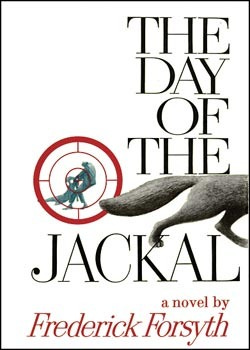

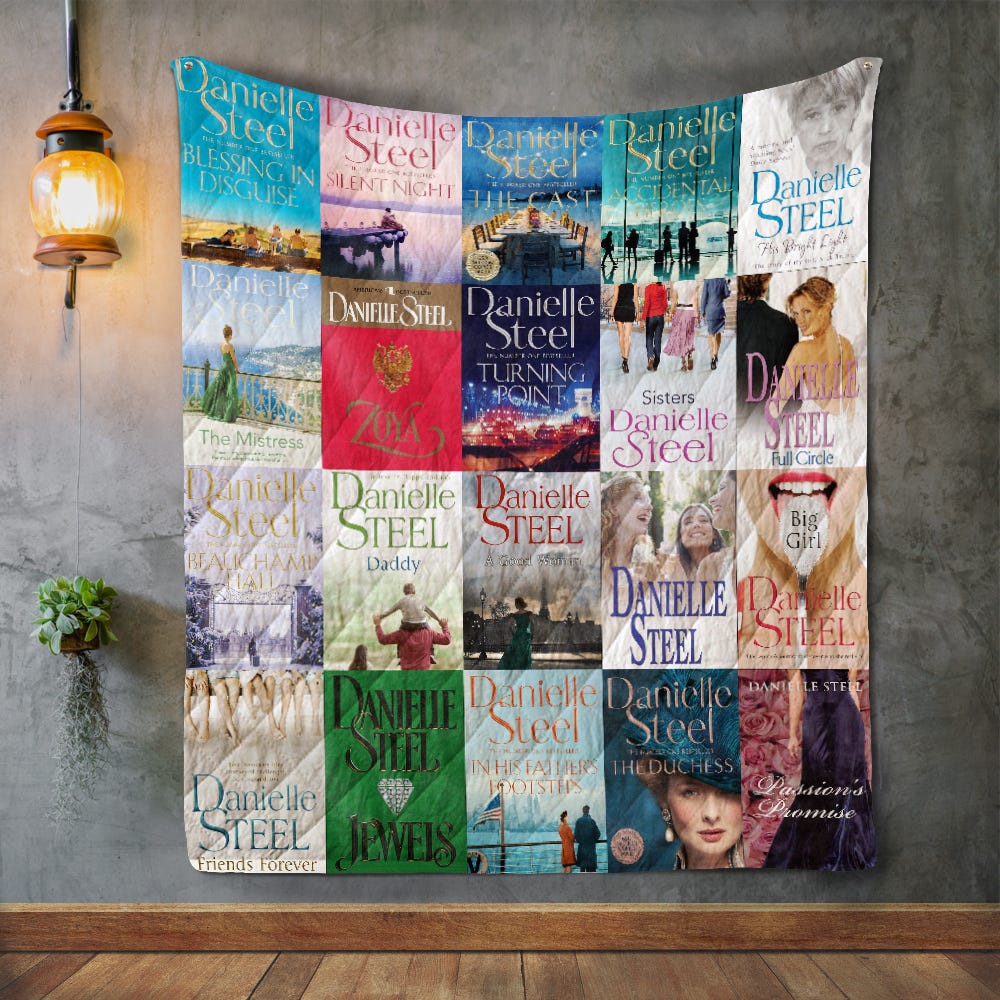






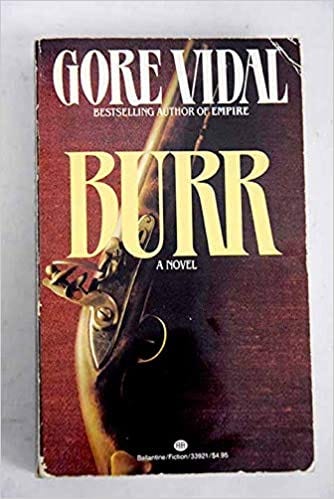

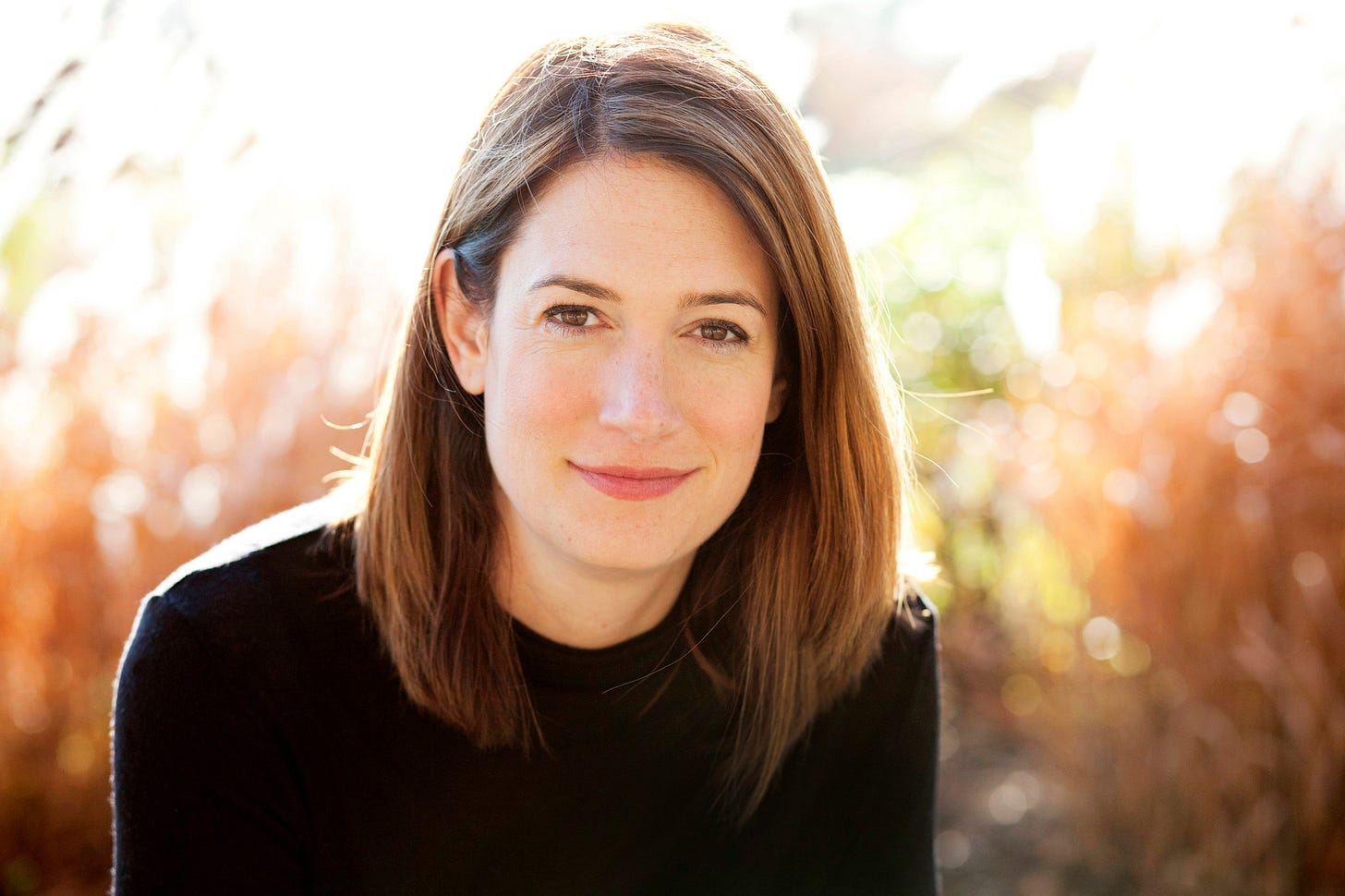
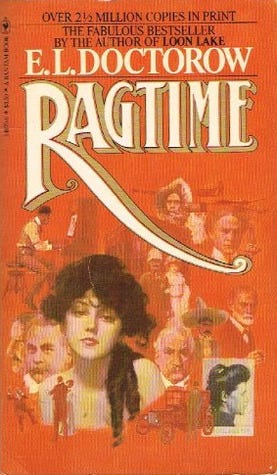
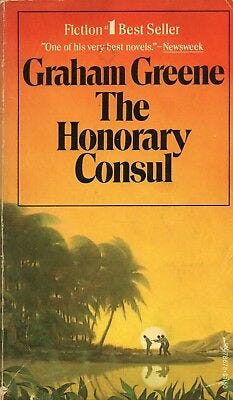

It’s disheartening to see the same names of some of the worst writers I’ve ever tried to read reappear over and over again on bestseller lists. Are we really that dumb, or could there be corruption in who grabs the brass ring?
I tried reading Sparks, Steele and Patterson at one point years ago. Couldn’t make it past a few chapters before giving up. All three reminded me of my Barbara Cartland years as a young teen. I devoured her books for a couple years, and as it was my first foray into historical fiction (a genre I still enjoy), I tried to read one of her books again about two decades ago for old times sake.
Good Lord! I was embarrassed for myself that I ever liked them! Complete and utter dreck! IMHO the authors I mentioned above are worthy inheritors of her mantle. Blech.
I found your substack just today and have subscribed as I love the written word. Your articles are enlightening and entertaining. Thank you for your labors.